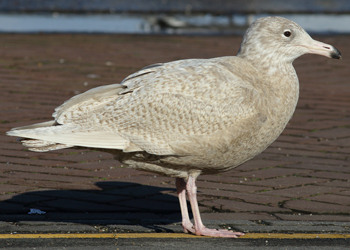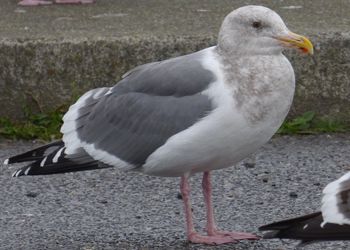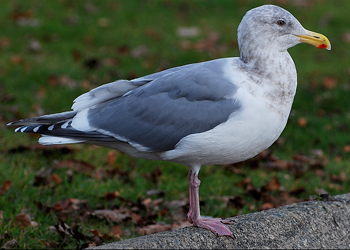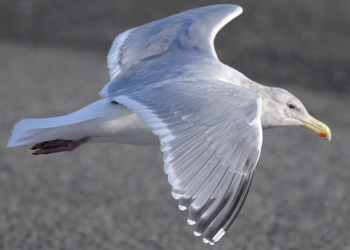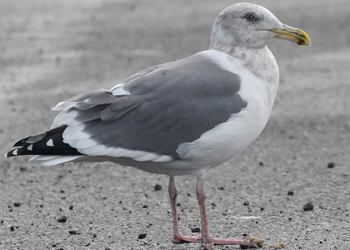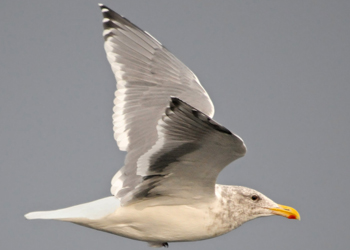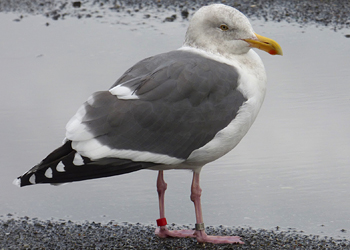 Slaty-backed Gull (schistisagus) / オオセグロカモメ / 큰재갈매기
Slaty-backed Gull (schistisagus) / オオセグロカモメ / 큰재갈매기
(last update: December 2015)
 Slaty-backed Gull (schistisagus) adult January
Slaty-backed Gull (schistisagus) adult January
Gulls of Europe, Asia and North America
by Malling Olsen, K. & Larsson, H.
Christopher Helm, London, 2004
"we" in the text below refers to the original authors. If any errors occur in this text, please let me know and mail to marsmuusseatgmaildotcom.
On these webpages you'll find captions "hybrid Glaucous-winged x Herring Gull (glaucescens x smithsonianus)" and "hybrid Glaucous-winged x Western Gull (glaucescens x occidentalis)", used for the “Cook Inlet Gull” and the "Olympic Gull" respectively. One should remember that it's a misconstruction to believe that one of the individual’s parents was a pure Glaucous-winged Gull, and the other was a pure Western or pure American Herring Gull. That's a reconstruction we just don't know for certain. In reality, many of these birds are the products of intermediate parents, hence the prefix "hybrid".
Identification of Slaty-backed Gull (schistisagus)
PART 1: description of adults (this page)
PART 2: description of 1st cycles
PART 3: description of 2nd cycles
PART 4
PART 1: description of adult birds
Length 61-66cm, wingspan 145-150cm. A large gull from N Asia, the only large dark-backed gull in its breeding range. It is stocky with rounded head, rather straight thick bill (at most with poorly marked gonys-angle) and rather strong but often short-looking pink to rosy legs. Alert birds often stretch the neck and adopt characteristic pot-bellied appearance. Wings are rather short in settled birds. In flight heavy with full neck, broad arm, but rather short pointed hand and often slender hindparts. Males may approach jizz and size of Great Black-backed or Glaucous Gull, smallest females approach Herring and Vega Gull.
In all ages, outer wing pattern offers best clues; wing-tip appears streaked with pale line of dots, as primaries (apart from P9-P10) have pale inner webs and mid-primaries broad white tongues, a pattern only matched to such a clear degree by certain hybrid gulls (Glaucous-winged x Western Gull, Glaucous-winged x American Herring Gull). Western Gull of the paler-mantled occidentalis shows heavier bill with more bulbous tip and squarer head, with eyes sitting higher on head. American Herring and Vega are slightly smaller and less heavy with slimmer bill and generally longer wings. Adult upperparts are much paler than in Slaty-backed and wing-tip darker.
Adult has slaty upperparts, slightly darker than Western Gull nominate occidentalis. Wing-tip diagnostic: black with pale inner webs to primaries and large white tongues, forming 'string of pearls’ which gently tapers away towards wing-tip. This is obvious in head- or side-view from below, and dark tips to outer primaries as dark trailing edge to outer wing. P10 and sometimes P9 have white mirrors; 5-7% have white tip to P10. Shows broad white trailing edge to inner wing, broader than in other large gulls apart from Great Black-backed and Kelp, which have blackish upperparts. The trailing edge merges with white tips to P1-P5 in flight. In settled birds, broad white scapular and tertial crescents are most noticeable, tertial crescents connecting to slightly narrower but striking white line on secondary tips. Wing-tip in settled birds similar to Western Gull, with 4-5 white primary tips beyond tertials, and 2-3 beyond tail-tip. In some there is a slight gap between inner two and exposed outer 2-3 primaries. Eyes pale (sometimes dark-peppered), surrounded by purple to deep pink orbital ring. Legs raspberry to rosy or pink.
In flight the adult wing pattern is striking. Caused by grey inner webs to primaries, the underside of the wing-tip looks mainly grey with black limited to tips, and the conspicuous white ‘string of pearls’ dulled somewhat by pale surroundings.
In summer, bill similar to Vega and American Herring, but generally paler orange-yellow. In winter, bill duller: base of bill often pinkish from Aug, and frequently bill shows narrow dark subterminal markings. Head and breast-sides heavily brown-spotted or -streaked, often with dense streaks around eye forming elongated dark mask, narrowing in front of pale eye. Legs pink, often raspberry-pink to rosy.
The rather dark upperparts make confusion with Western Gull highly probable. Western of similar size, but head heavier, bill with more bulbous tip, eyes are smaller and darker, and placed further back and higher on head, and wing-tip is more solid black with white mirror on P10 only and black wedges to all primaries; at most shows ‘string of pearls’ in mid-primaries and – from below - much fuller black hand than Slaty-backed. Furthermore, upperparts are less bluish-tinged, legs duller flesh and head mainly white in winter. Vega and American Herring Gull generally smaller with paler grey upperparts (darkest in Vega) and more solid black wing-tip, typically lacking pale streaks and line of spots: the character is not foolproof, as some Vega and American Herring show limited black on wing-tip, and some Slaty-backed lack white subterminal spot on P8. Hybrid Western x Glaucous-winged Gull with outer wing similar to Slaty-backed identified in winter by weaker, greyer, dark head-markings, more diffuse rather than spotted or streaked, squarer head with eyes places higher on head, and bulbous tip to heavier bill.
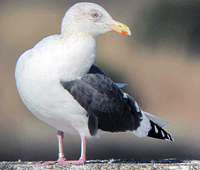 Slaty-backed Gull (schistisagus) 11A-12960 13th cycle (14CY), January 07 2012, Choshi, Chiba Prefecture, Japan. Picture: Seichoudoku.
Slaty-backed Gull (schistisagus) 11A-12960 13th cycle (14CY), January 07 2012, Choshi, Chiba Prefecture, Japan. Picture: Seichoudoku.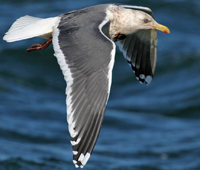 Slaty-backed Gull (schistisagus) adult, January 02 2010, Choshi, Japan. Picture: Chris Gibbins.
Slaty-backed Gull (schistisagus) adult, January 02 2010, Choshi, Japan. Picture: Chris Gibbins.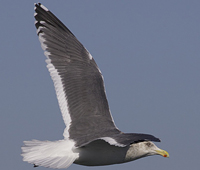 Slaty-backed Gull (schistisagus) adult, January 27 2011, Choshi, Japan. Picture: Terry Townshend.
Slaty-backed Gull (schistisagus) adult, January 27 2011, Choshi, Japan. Picture: Terry Townshend.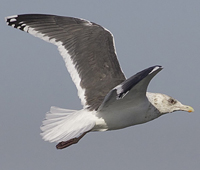 Slaty-backed Gull (schistisagus) adult, January 25 2011, Choshi, Japan. Picture: Terry Townshend.
Slaty-backed Gull (schistisagus) adult, January 25 2011, Choshi, Japan. Picture: Terry Townshend.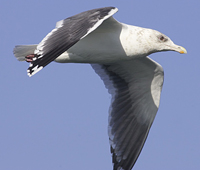 Slaty-backed Gull (schistisagus) adult, January 25 2011, Choshi, Japan. Picture: Terry Townshend.
Slaty-backed Gull (schistisagus) adult, January 25 2011, Choshi, Japan. Picture: Terry Townshend.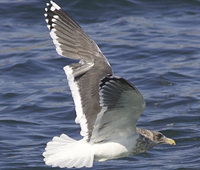 Slaty-backed Gull (schistisagus) adult, January 25 2011, Choshi, Japan. Picture: Terry Townshend.
Slaty-backed Gull (schistisagus) adult, January 25 2011, Choshi, Japan. Picture: Terry Townshend.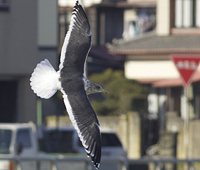 Slaty-backed Gull (schistisagus) adult, January 25 2011, Choshi, Japan. Picture: Terry Townshend.
Slaty-backed Gull (schistisagus) adult, January 25 2011, Choshi, Japan. Picture: Terry Townshend.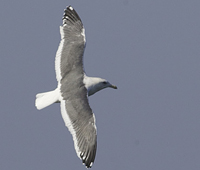 Slaty-backed Gull (schistisagus) adult, January 25 2011, Choshi, Japan. Picture: Terry Townshend.
Slaty-backed Gull (schistisagus) adult, January 25 2011, Choshi, Japan. Picture: Terry Townshend.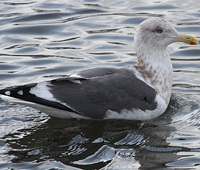 Slaty-backed Gull (schistisagus) adult, January 21 2011, Choshi, Japan. Picture: Stuart Price.
Slaty-backed Gull (schistisagus) adult, January 21 2011, Choshi, Japan. Picture: Stuart Price.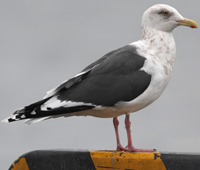 Slaty-backed Gull (schistisagus) adult, January 02 2010, Choshi, Japan. Picture: Chris Gibbins.
Slaty-backed Gull (schistisagus) adult, January 02 2010, Choshi, Japan. Picture: Chris Gibbins.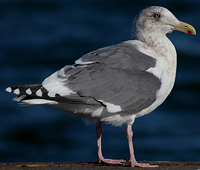 Slaty-backed Gull (schistisagus) adult, January 02 2010, Choshi, Japan. Picture: Chris Gibbins.
Slaty-backed Gull (schistisagus) adult, January 02 2010, Choshi, Japan. Picture: Chris Gibbins.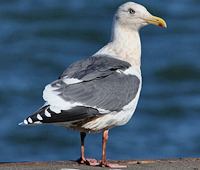 Slaty-backed Gull (schistisagus) adult, January 02 2010, Choshi, Japan. Picture: Chris Gibbins.
Slaty-backed Gull (schistisagus) adult, January 02 2010, Choshi, Japan. Picture: Chris Gibbins.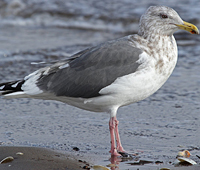 Slaty-backed Gull (schistisagus) adult, January 21 2011, Choshi, Japan. Picture: Stuart Price.
Slaty-backed Gull (schistisagus) adult, January 21 2011, Choshi, Japan. Picture: Stuart Price.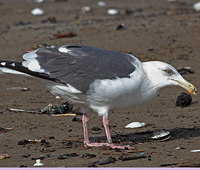 Slaty-backed Gull (schistisagus) adult, January 21 2011, Choshi, Japan. Picture: Stuart Price.
Slaty-backed Gull (schistisagus) adult, January 21 2011, Choshi, Japan. Picture: Stuart Price.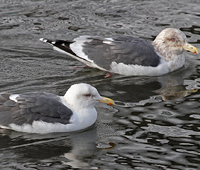 Slaty-backed Gull (schistisagus) adult, January 21 2011, Choshi, Japan. Picture: Stuart Price.
Slaty-backed Gull (schistisagus) adult, January 21 2011, Choshi, Japan. Picture: Stuart Price.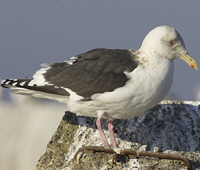 Slaty-backed Gull (schistisagus) adult, January 25 2011, Choshi, Japan. Picture: Terry Townshend.
Slaty-backed Gull (schistisagus) adult, January 25 2011, Choshi, Japan. Picture: Terry Townshend.
